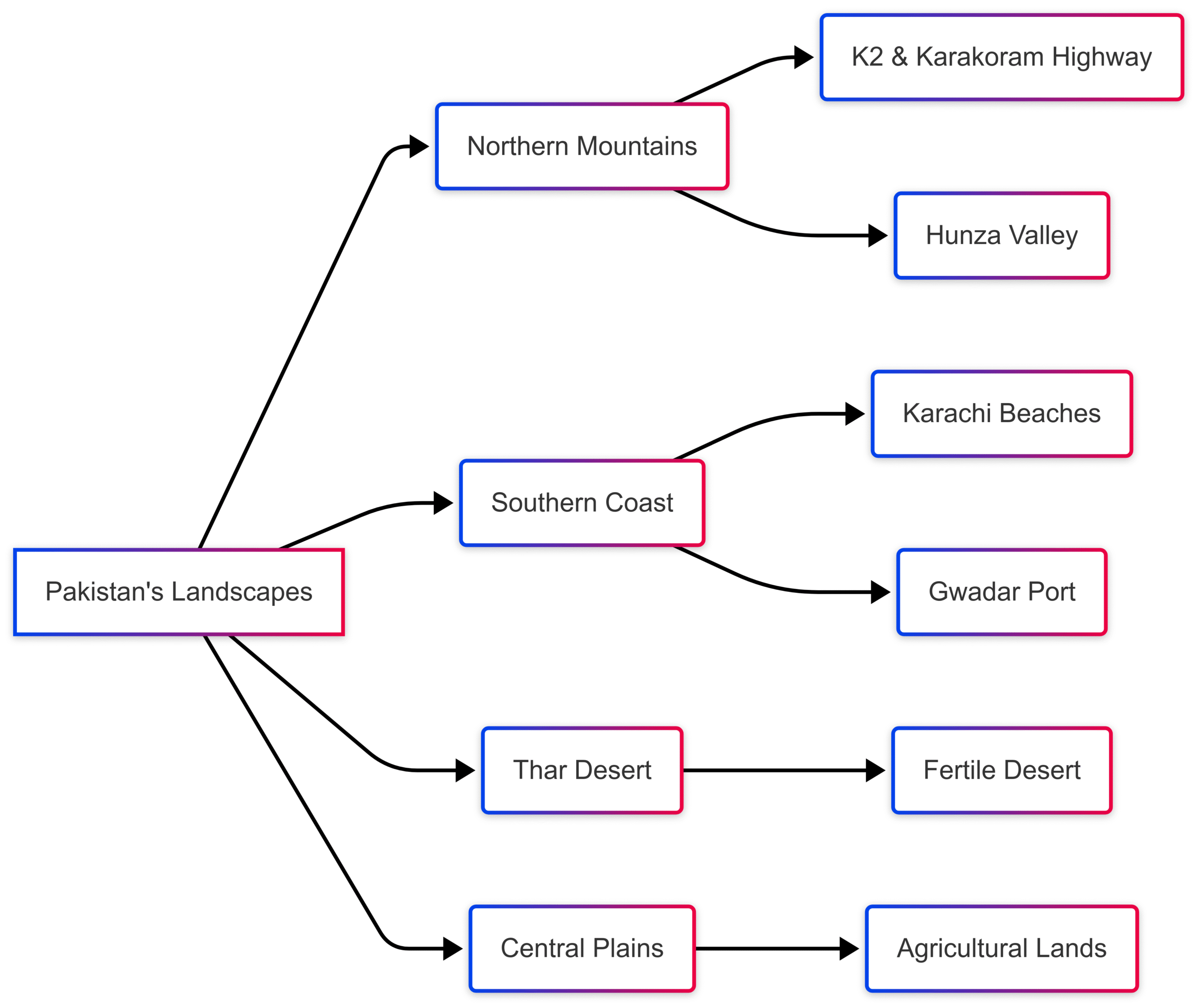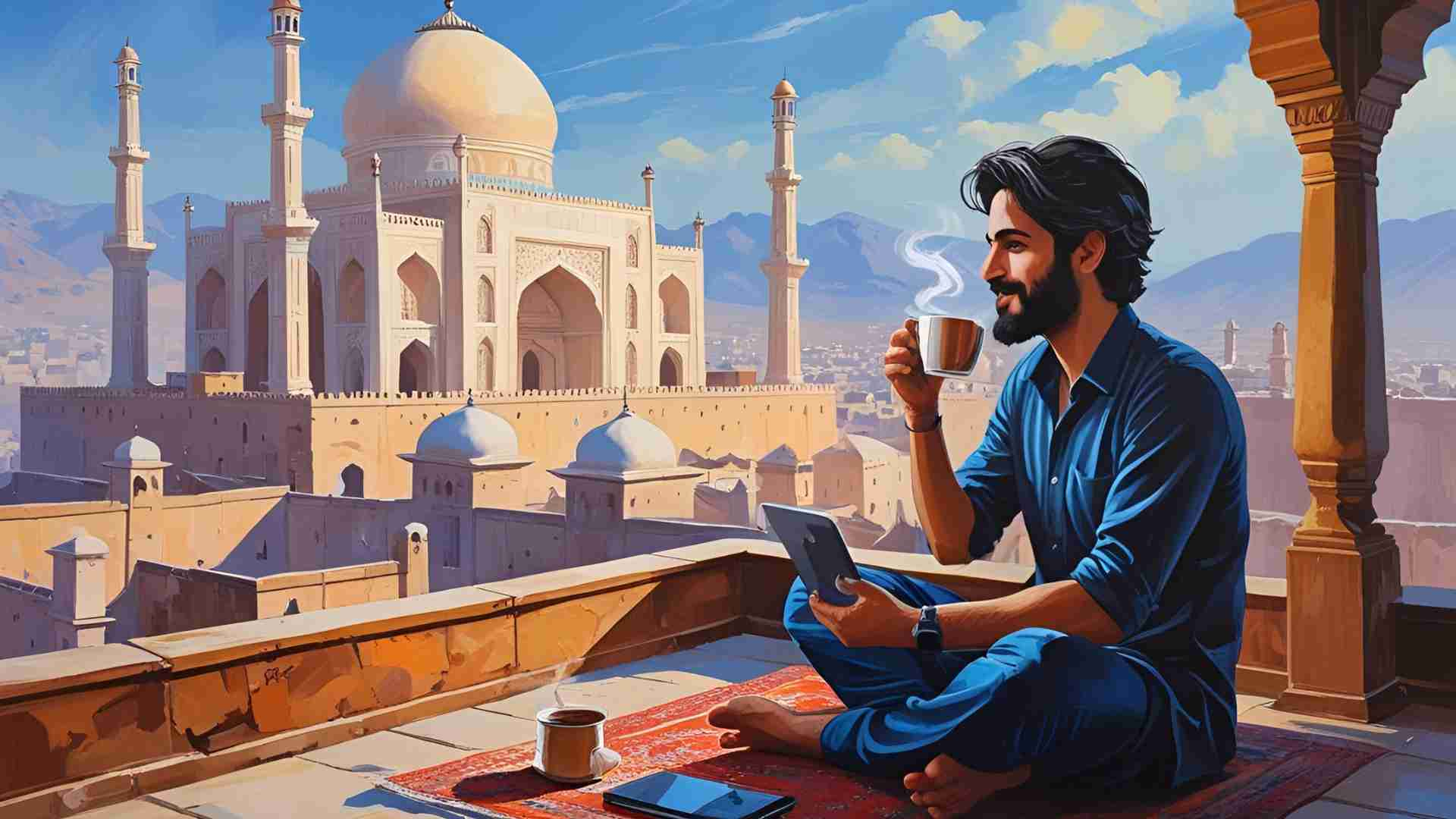Discover why Pakistan is a top destination for digital nomads with its low cost of living, diverse landscapes, vibrant culture, and growing coworking spaces.
Pakistan, often overlooked in favor of more established digital nomad hubs like Thailand or Bali, is emerging as a hidden gem for remote workers seeking affordability, cultural richness, and adventure. With a low cost of living, diverse landscapes, a welcoming culture, a growing digital nomad community, and access to coworking spaces, Pakistan offers a unique blend of professional and personal opportunities. This article explores why Pakistan should be on every digital nomad’s radar, providing practical insights, cost breakdowns, and tips for navigating challenges.
1. Unmatched Affordability for Digital Nomads
One of Pakistan’s strongest draws for digital nomads is its remarkably low cost of living, making it an ideal destination for those looking to stretch their budgets without sacrificing quality of life. Compared to other South Asian countries like India or Western destinations like Portugal, Pakistan offers significant savings across accommodation, food, transportation, and internet.
Cost Breakdown
| Category | Approximate Cost (USD) | Details |
|---|---|---|
| Accommodation | $100–$270/month | Studio apartments in Karachi or Lahore: $100–$240; Islamabad hotels: ~$270/month |
| Food | $2–$20/meal | Street food: $2–$10; Western/continental restaurants: $15–$20 |
| Internet | $11–$13/month | 30 GB data: $11; 60 GB data: $13 (e.g., Zong data SIM) |
| Transportation | $1–$10/day | Metro bus: ~$1/trip; Uber/Careem rides: $5–$10/day for regular commuting |
Accommodation Options
- Karachi: As Pakistan’s largest city, Karachi offers budget-friendly apartments starting at $100/month for a basic studio. More upscale options in areas like Clifton range from $150–$240/month.
- Lahore: Known for its cultural heritage, Lahore provides affordable rentals, with studio apartments averaging $100–$200/month in areas like Defence or Gulberg.
- Islamabad: The capital city, with its scenic Margalla Hills, has slightly higher costs, with apartments or hotel rooms at $200–$270/month.
- Northern Areas (e.g., Hunza): For those seeking natural beauty, a hotel room with stunning views in Hunza costs around $95/night, but long-term house rentals can reduce costs to $150–$200/month.
Food and Daily Expenses
Pakistan’s culinary scene is a delight for digital nomads, offering everything from street food like chicken karahi and biryani ($2–$5) to continental dishes in upscale restaurants ($15–$20). A daily budget of $15–$50 covers meals, local transport, and minor expenses, making Pakistan one of the most affordable destinations for long-term stays.
Internet Affordability
Reliable internet is critical for digital nomads, and Pakistan delivers with competitive pricing. A 30 GB monthly data package from providers like Zong costs just $11, while 60 GB plans are available for $13. High-speed fiber optic connections are increasingly common in urban areas, ensuring smooth remote work.
2. Diverse Landscapes for Inspiration and Adventure
Pakistan’s geographical diversity is a major draw for digital nomads who crave inspiration from their surroundings. From the rugged peaks of the Himalayas to the sandy beaches of the Arabian Sea, the country offers a range of environments that cater to adventurers, nature lovers, and cultural explorers alike.
Key Destinations
- Northern Pakistan (Himalayas and Karakoram): Home to eight of the world’s 20 tallest peaks, including K2, the second-highest mountain globally. The Karakoram Highway, the world’s highest paved road, connects Pakistan to China and offers breathtaking views of the Hunza Valley, Attabad Lake, and Nanga Parbat.
- Southern Coast (Karachi to Gwadar): The Arabian Sea coastline features vibrant beaches like Clifton and deep-sea ports like Gwadar, ideal for water-based activities such as scuba diving and speedboating.
- Thar Desert (Southeast): A fertile desert with a significant Hindu population, offering a unique cultural experience and opportunities to explore desert ecosystems.
- Central Plains: Known for agricultural richness, these areas produce world-class cotton and mangoes, providing a glimpse into rural Pakistani life.
Activities for Digital Nomads
| Activity | Location | Cost (USD) | Description |
|---|---|---|---|
| Hiking | Fairy Meadows | $20–$50/day | Trekking with views of Nanga Parbat |
| Scuba Diving | Karachi | $30–$50/session | Explore marine life in the Arabian Sea |
| Speedboating/Parasailing | Khanpur | $15–$30/session | Adrenaline-pumping water sports |
| Cultural Tours | Mohenjo-Daro, Lahore | $10–$20/tour | Visit UNESCO sites like Mohenjo-Daro and Lahore’s Mughal-era monuments |
Chart: Pakistan’s Diverse Landscapes

This diversity ensures digital nomads can balance work with exploration, finding inspiration in Pakistan’s varied terrains.
3. Warm and Welcoming Culture
Pakistan’s hospitality is legendary, often surprising digital nomads with its warmth and generosity. Locals frequently go out of their way to make visitors feel at home, from offering free meals to inviting strangers for tea. This cultural trait creates a supportive environment for remote workers.
Hospitality in Action
Travel vloggers like Drew Binsky and Eva Zu Beck have highlighted Pakistan’s unique hospitality, where shopkeepers, taxi drivers, and locals often refuse payment for small services, viewing guests as an honor. This generosity extends to digital nomads, who find it easy to integrate into communities.
Cultural Engagement
- Festivals: Participate in Eid ul-Fitr and Eid ul-Adha, vibrant celebrations featuring traditional foods, colorful attire, and community gatherings.
- Local Interactions: Joining language classes, book clubs, or sports teams helps nomads connect with locals and expats alike.
- Cultural Norms: Dress modestly (especially for women), avoid public displays of affection, and respect religious customs to blend seamlessly into the culture.
Challenges to Navigate
- Language Barrier: While English is spoken in urban areas, learning basic Urdu or regional languages like Punjabi or Pashto enhances interactions.
- Gender Roles: Traditional expectations may require adjustment, particularly for women navigating conservative dress codes.
- Cultural Etiquette: Avoid discussing sensitive topics like religion or politics in public to prevent misunderstandings.
4. Growing Digital Nomad Community and Coworking Spaces
Pakistan’s digital nomad scene is nascent but rapidly expanding, offering opportunities for networking and collaboration. Urban centers like Karachi, Lahore, and Islamabad are seeing a rise in coworking spaces tailored to remote workers.
Top Coworking Spaces
| City | Coworking Space | Cost (USD) | Features |
|---|---|---|---|
| Islamabad | The Monal | $10–$15/day | Scenic views, high-speed Wi-Fi, diverse menu |
| Islamabad | Atrio Café and Grill | $8–$12/day | Rooftop workspace, Margalla Hills views |
| Lahore | Kickstart | $5–$10/day | Central location, reliable internet |
| Karachi | Espresso | $7–$12/day | Fast Wi-Fi, budget-friendly food options |
Networking Opportunities
Pakistan’s freelancing sector is booming, with over 300,000 English-speaking professionals in IT, software development, and virtual assistance. Digital nomads can tap into this talent pool through:
- Incubation Centers: Organizations like Plan9 in Lahore and The Nest I/O in Karachi foster innovation and networking.
- Online Communities: Platforms like Pakistan Freelancers Association (PFA) and social media groups connect nomads with local professionals.
- Events: Attend tech meetups, cultural festivals, or expat gatherings to build professional and personal networks.
Chart: Digital Nomad Ecosystem in Pakistan

5. Rich Cultural Heritage and Growth Opportunities
Pakistan’s cultural tapestry, woven from its ancient history and diverse ethnic groups, offers digital nomads a chance to immerse themselves in a vibrant backdrop. The country’s tourism sector, still developing, also presents unique opportunities for contribution and growth.
Cultural Highlights
- UNESCO Sites: Explore Mohenjo-Daro, part of the Indus Valley Civilization, and Mughal-era monuments like Lahore Fort and Badshahi Mosque.
- Local Traditions: Engage with diverse communities, from the Kalash people in Chitral to the Sindhi fishermen of Karachi.
- Culinary Diversity: Savor dishes like biryani, nihari, and Hunza’s walnut cake, reflecting Pakistan’s regional flavors.
Opportunities in Tourism
Pakistan’s tourism industry is on the rise, with a six-place jump on the World Tourism Index. Digital nomads with skills in content creation, marketing, or tech can contribute to this growth by:
- Collaborating with Local Businesses: Work with tour operators or startups to promote Pakistan’s attractions.
- Content Creation: Create blogs, vlogs, or social media content to showcase unexplored destinations.
- Tech Development: Develop apps or platforms to improve tourism infrastructure, such as booking systems or virtual tours.
Growth in Freelancing
Pakistan’s IT sector grew by 29% in 2022, driven by a young, tech-savvy population. Digital nomads can leverage this by partnering with local freelancers for projects or mentoring at incubation centers.
Navigating Challenges as a Digital Nomad in Pakistan
While Pakistan offers immense potential, digital nomads should be prepared for certain challenges:
Internet Connectivity
While urban areas like Karachi and Islamabad boast reliable high-speed internet, rural regions like parts of Balochistan may have inconsistent connectivity. Researching ISქ
Safety Concerns
Certain areas, particularly near the Afghan border, may pose security risks. Stick to well-traveled cities and tourist destinations like Lahore, Islamabad, and Hunza, and check travel advisories.
Visa and Residency Requirements
- Tourist Visa: Easily obtainable through Pakistani embassies, requiring a valid passport, proof of financial stability, and travel insurance.
- Long-Term Visas: Work, student, or business visas may be required for extended stays, with additional documentation like police clearance certificates.
Healthcare
Public healthcare varies by region, with private facilities in urban areas offering higher quality. Digital nomads should secure international health insurance, such as GeoBlue or William Russell, for comprehensive coverage.
Practical Tips for Digital Nomads
- Housing: Use real estate agents or platforms like Deal Makers in Lahore for reliable rentals. Areas like Defence in Lahore or F-7 in Islamabad are expat-friendly.
- Transportation: Utilize Uber, Careem, or metro buses for affordable commuting.
- Cultural Sensitivity: Dress modestly, respect religious customs, and learn basic Urdu phrases to enhance interactions.
- Networking: Join expat groups, attend local festivals, and participate in professional meetups to build connections.
Conclusion
Pakistan is a vibrant, affordable, and culturally rich destination for digital nomads seeking adventure and opportunity. Its low cost of living, diverse landscapes, welcoming culture, growing nomad community, and rich heritage make it an unforgettable experience. While challenges like internet inconsistency and safety concerns exist, careful planning and cultural awareness can ensure a rewarding stay. Whether you’re working from a scenic coworking space in Islamabad or exploring the ancient ruins of Mohenjo-Daro, Pakistan offers a unique blend of work and wonder for digital nomads.
Please share this Five Reasons, Why Digital nomads Should Explore Pakistan with your friends and do a comment below about your feedback.
We will meet you on next article.
Until you can read, Solo Female Travel As A Digital Nomad: My Experience
